The world of the types of buildings is vast and complex, ranging from small houses to towering skyscrapers. For those who enter for the first time in this area, it can be overwhelming the amount of technical terms, materials, and regulations that exist.
The construction it is the process by which erected physical structures, such as buildings, bridges, roads and other infrastructure. It involves a combination of planning, design, execution and maintenance to create environments functional and safe.
In essence, the building is the materialization of ideas and concepts in tangible ways. Construction professionals, such as architects, engineers and construction workers, collaborate to give life to projects that impact our everyday lives.
From antiquity to the present, the building has been a fundamental pillar for the development of the society. Whether it's building homes, infrastructure or commercial spaces, the building is an art that combines science, creativity and technical skills. As we move forward, the construction also adapts to the changing demands of the modern world, incorporating sustainable technologies and innovative practices.
In this article, we propose to offer a comprehensive and accessible guide on the types of construction, its classification and the rules that regulate them. Our goal is to provide the readers a solid foundation of knowledge so that they can better understand the construction process and make informed decisions.
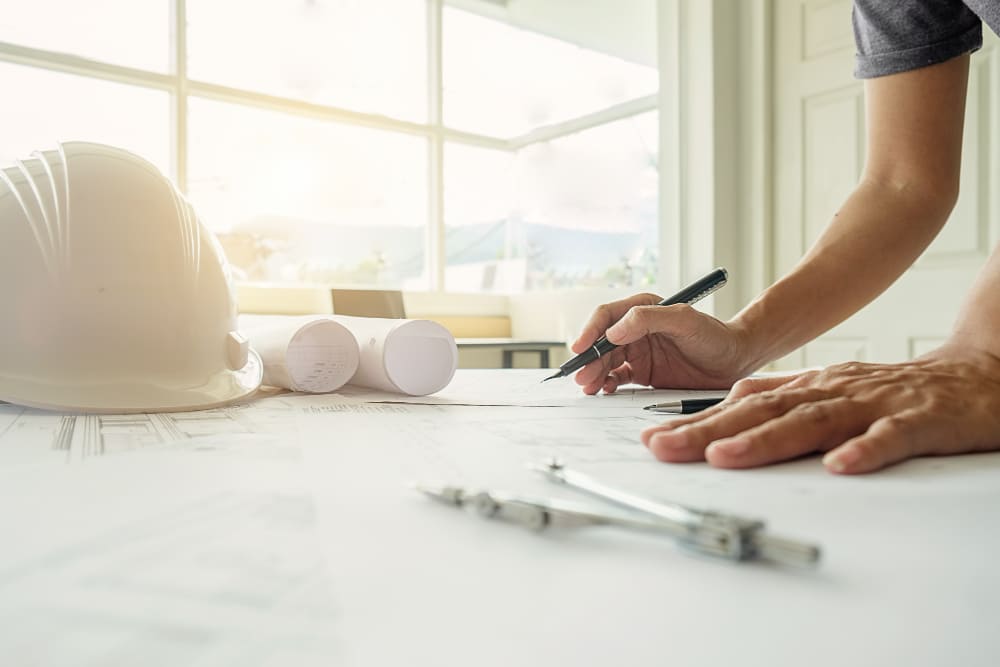
In this post, we delve into:
What is the construction?
The construction it is the process by which you create works of lasting, such as buildings, infrastructure, and housing. It involves the application of knowledge engineering, architecture and design to realise projects in reality. Throughout history, many cultures have used techniques of construction to erect temples, palaces and homes in their ceremonial centers. Currently, the construction is a vital industry that involves engineers, architects, designers, and workers.
The construction is not just limited to the building of physical structures, but also encompasses the creation of transportation systems, power grids, sanitation systems, and more. Since ancient times, civilizations have used materials available in their environment, such as stones, wood and clay, to build their homes and monuments. The Egyptian pyramids, the Greek temples and roman amphitheatres are examples iconic building at different times.
At present, the construction has become more complex due to technological advances, the variety of sizes, and the growing demand for modern infrastructure. Construction projects require planning, design, management and execution. Engineers and architects collaborate to create structures that are safe, functional, and aesthetically pleasing. In addition, the sustainable construction it has become a priority to reduce the environmental impact and ensure the conservation of natural resources.
Importance of construction
The building plays a crucial role in the development of a society. Some highlights of their importance, are:
Economic development
- The construction creates jobs and contributes to economic growth. Every construction project involves the recruitment of workers, engineers, architects, material suppliers, and other professionals.
- The investment in infrastructure (roads, bridges, airports, etc.) improves connectivity and facilitate trade, which benefits the economy in general.
Improving the quality of life
- Residential homes and commercial buildings provide spaces livable and functional for people.
- Infrastructure (such as potable water and sewer) improve the quality of life by providing basic services.
Urban development
- The construction gives way to the cities and towns. The buildings, parks, squares and streets are part of the urban environment.
- The planned development and sustainable, it is essential to avoid problems such as congestion and the lack of green spaces.
Innovation and technology
- The building drives the innovation in materials, construction techniques and energy systems.
- The application of technologies such as virtual reality, artificial intelligence and 3D printing is transforming the industry.
Agents involved in the construction process
The construction is a collaborative effort that involves multiple agents. Each plays a key role in the process:
Engineers
The engineers they are trained professionals in various disciplines, such as civil engineering, mechanical or electrical. Working in close collaboration with architects and other specialists to ensure that structures are safe, efficient, and comply with established standards.
Architects
The architects are the visual creators of the buildings. Design the spaces, considering aspects such as functionality, aesthetics, and integration with the environment. Their work goes beyond the planes; they also care about the user experience and the harmony between form and function.
Workers and labor
The workers are those who carry out the physical work of the construction. From digging foundations to place bricks or install electrical systems, their work is essential. The labor force includes bricklayers, carpenters, electricians, plumbers, and other specialists.
Machines and equipment
The construction moderna is supported in machines and equipment specialized. Cranes, excavators, concrete mixers, pneumatic hammers and other devices speed up the process and improve the efficiency. Machinery operators are also part of the construction team.
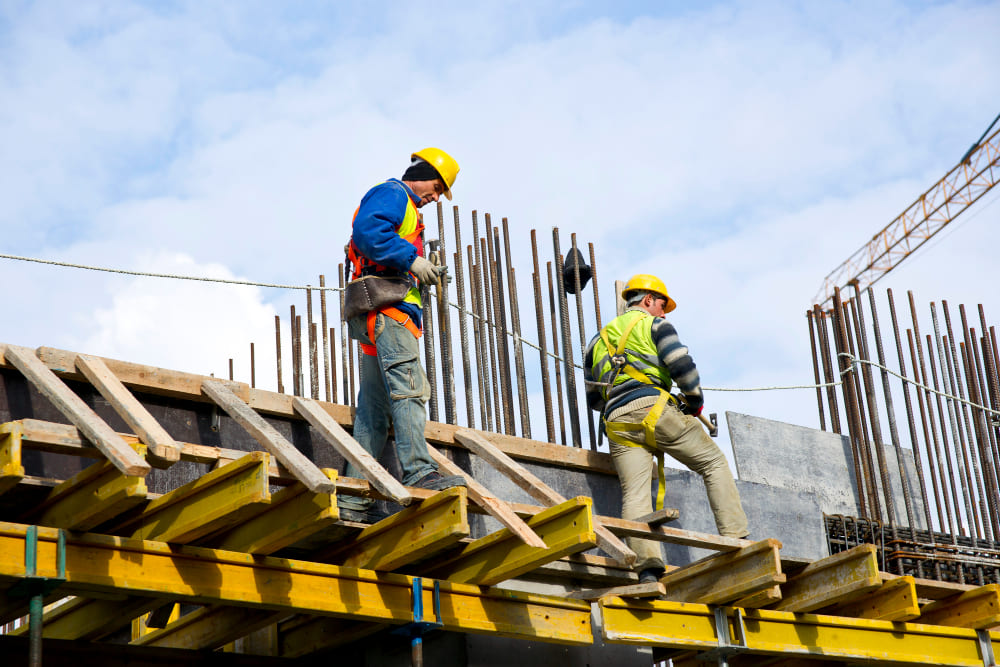
Types of constructions: A wide variety
The diversity of construction projects is reflected in the different types of construction. Each one has its specific characteristics and requires different approaches:
Residential construction
- Housing: The houses and apartments where people live and develop in their everyday life. The residential building is looking for comfort, security and functionality.
- Multifamily buildings: Apartments or condos that are home to several families in the same building. These projects require careful planning to maximize the space and ensure the privacy of the residents.
Commercial construction
- Commercial buildings: Spaces for commercial activities such as shops, restaurants, offices, and shopping centers. Commercial construction, you should consider the accessibility, visibility and energy efficiency.
- Hotels and hospitals: Establishments that require specific facilities to cater to their clients or patients. Safety and functionality are a priority.
Industrial construction
- Factories and industrial plants: Spaces where it is produced or processed by some type of product. The industrial building must be adapted to the specific needs of each industry and to ensure the safety of the workers.
- Warehouses and logistics centers: Places for the storage and distribution of goods. The efficiency in the design and accessibility for freight vehicles are essential.
- Power plants: Include power plants, water treatment plants and more. Require specialized systems.
Construction of public works
- Infrastructure: Roads, bridges, tunnels, public transportation systems, water networks and sewage, among others. These works benefit the entire community and require a long-term planning.
- Public spaces: Parks, squares, stadiums and other places of recreation. The construction of public spaces is looking for integration with the environment and the comfort of the users.
Types of materials used in construction
The materials of construction are fundamental to any project. The choice of materials affects the durability, strength and efficiency of a building, and even the price, and so we advise you negotiate the price of the house depending on the materials. Let's look at the main types of materials used in construction:
- Stone materials:
- Natural stone: Granite, marble, slate, among others. They are used in facades, floors, and decorative elements.
- Bricks and blocks: Manufactured from clay or concrete. They are common in the construction of walls and partitions.
- Ceramic materials:
- Texas: Used for roofs, and ceilings.
- Refractory bricks: Heat-resistant, used in fireplaces and stoves.
- Metallic materials:
- Steel: Versatile and durable, it is used in structures, beams and columns.
- Aluminum: Lightweight and anti-corrosion, it is used in windows and doors.
- Bituminous materials:
- Asphalt: It is used in floors and flat roofs.
- Wood materials:
- Solid wood: Oak, pine, cedar, etc Are used in structures, floors and wall coverings.
- Wooden boards: Chipboard, plywood, MDF. They are versatile and economical.
- Plastic materials:
- PVC: Tubes and pipes, windows, and siding.
- Polyethylene: Insulation and water-resistant sheets.
- Composite materials:
- Reinforced concrete: Mix of concrete and steel. It is durable and is used in foundations and structures.
- Fiber glass: Lightweight and durable, it is used in swimming pools and boats.
Properties of construction materials
- Resistance: The ability to support loads without deformation or rupture.
- Durability: Wear resistance, weather and corrosion.
- Thermal and acoustic insulation: Some materials have better insulating properties than others.
- Impermeability: The ability to prevent the entry of water.
Choice of materials of construction
The choice of materials should be considered:
- Environment: Climate, moisture and exposure to the sun.
- Budget: Some materials are more expensive than others.
- Sustainability: Choose renewable materials and recyclable.
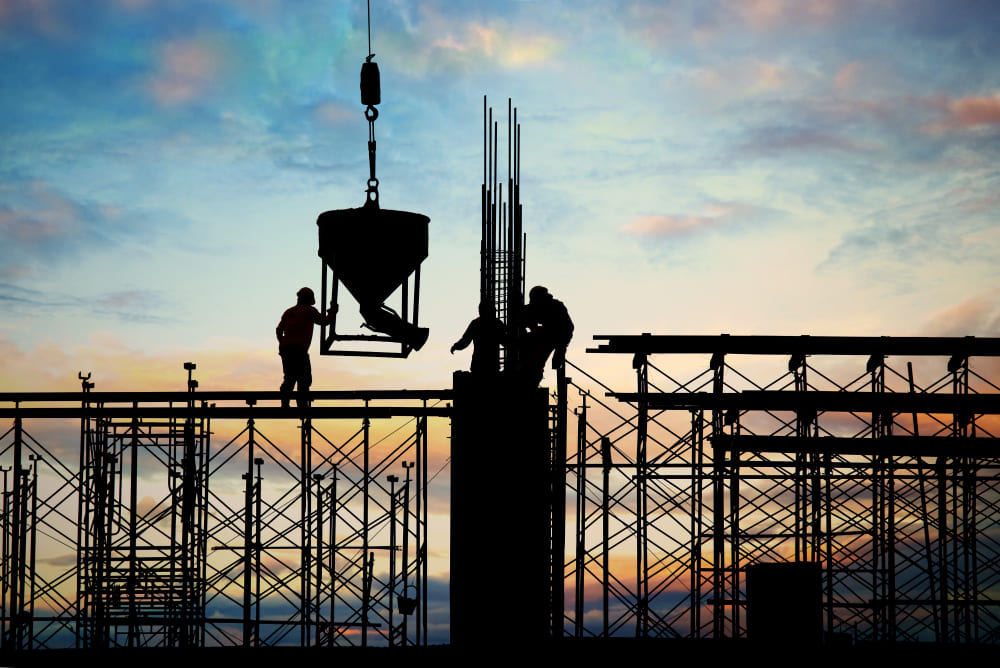
Structural elements of a house
Foundation
The foundation is the foundation of a home, which transmits the loads of the building to the ground, avoiding settlements and damages. Its importance lies in that it provides a solid basis for the rest of the structure.
Walls
The walls are vertical elements that provide support and stability to the housing, dividing the interior space and protecting from the outside. Its importance lies in that they provide separation between the different spaces and protection against the weather.
Beams
The beams are horizontal elements that connect the walls and provide support for the deck, distributing the load in a uniform manner. Its importance lies in that they enable the construction of ceilings and walls high and wide.
Pillars
The pillars are vertical elements that provide additional support to the home, especially in areas with high load, such as balconies or terraces. Its importance lies in that they help to distribute the loads of the building, avoiding breakdowns and damage.
Cover
The cover is the element that protects the home from the elements of the weather, providing thermal and acoustic insulation, and avoiding the entry of water and air. Its importance lies in that it provides an effective barrier against the weather.
Other non-Structural Elements of a Home
Stairs
The stairs are elements that connect the different levels of a home, providing access to safe and comfortable in between the floors. Its importance lies in that they allow circulation between the different levels of the home.
Windows
The windows are the elements that allow the entry of natural light and ventilation, improving the indoor air quality. Its importance lies in that they provide natural lighting and ventilation, improving the health and well-being of the inhabitants.
Partitions
The walls are the elements that divide the interior space of a home, providing privacy, and creating functional spaces. Its importance lies in that they enable the creation of personalized spaces and functional.

Types of construction on the basis of their structure
Steel structure
The steel structures are a marvel of modern engineering. They are composed of beams, columns and connections are welded or bolted. Some key features of this type of construction are:
- Resistance: Steel is exceptionally resistant to vertical and lateral loads. This makes it an ideal choice for skyscrapers and bridges.
- Versatility: Steel structures allow large spans without intermediate columns. This gives rise to spaces large and diaphanous.
- Durability: The steel is resistant to corrosion, but it requires adequate protection to prevent rust.
- Common use: It is used in skyscrapers, bridges, industrial buildings and structures on a large scale.
Concrete structure
The reinforced concrete is ubiquitous in the construction. Combines the strength of steel with the versatility of concrete. Some of the highlights are:
- Composition: The concrete is composed of cement, sand, gravel and water. The steel rods are inserted to increase the resistance.
- Applications: It is used in buildings, bridges, dams and underground structures.
- Durability: The concrete is durable and fire resistant.
- Formwork: To give shape to the concrete structures, used formwork temporary.
Brick structure
The bricks are the basic elements in the construction. Are used in both residential construction and commercial. Some features of the structures made of brick are:
- Economy: The bricks are inexpensive and widely available.
- Thermal insulation: Provide good thermal insulation, keeping the interior cool in summer and warm in the winter.
- Coating: Require a good coating to protect against the elements.
- Aesthetic: Bricks provide a traditional look and warm to the buildings.
Stone structure
Natural stone has been used for centuries in the construction. Some features of the stone structures are:
- DurabilityThe stone is durable and can last for generations.
- Aesthetic: The facades of stone add a touch of elegance and authenticity.
- Specialized skills: The stone placement requires craft skills.
- Applications: It is used in historical buildings, monuments, and retaining walls.
Adobe structure
Adobe is an ancestral material made of clay and straw. Although less common in the construction moderna, is still used in arid regions, and warm. Some features of the adobe structures are:
- Natural materials: Adobe is composed of land, water, and vegetable fibers.
- Thermal insulation: Offers good thermal insulation.
- Constant maintenance: The adobe requires regular maintenance and protection against the rain.
- Aesthetic rustic: The construction of adobe buildings have a rustic charm and authentic.
Construction standards: Ensuring the safety and quality
The rules of construction are essential to ensure that buildings are safe, durable, and meet the quality standards. These standards establish guidelines and requirements that must be followed during the construction process. Let's look at some key aspects:
What are building regulations?
- The rules of construction are rules and guidelines that define the procedures, materials and techniques acceptable in the construction industry.
- These rules may be national, international or specific for each type of construction (for example, standards for office buildings, hospitals or bridges).
Importance of rules of construction
- SecurityThe standards ensure that structures are safe for the occupants and workers. Considers aspects such as resistance to earthquakes, fires and other risks.
- QualityThe standards establish criteria for the quality of the materials and the execution of the projects. This prevents defects and long-term problems.
- Uniformity: The standards provide a common framework for the construction, which facilitates communication between professionals and the comparison of projects.
Types of construction standards
- National standards: Established by the governments of each country. For example, the Technical Building code (CTE) in Spain.
- International standards: Developed by organizations such as the ISO (International organization for Standardization). These standards are applicable in multiple countries.
- Specific standards for each type of construction: For example, the rules to build a bridge differ from those of a home.
- Institutions responsible for building standards: Government agencies, professional associations, and private entities to contribute to the development and updating of these standards.
Compliance with the rules of construction
- The compliance it is the responsibility of all those involved in the project.
- Penalties: Non-compliance can result in fines, suspensions of works, or even the demolition of a structure unsafe.
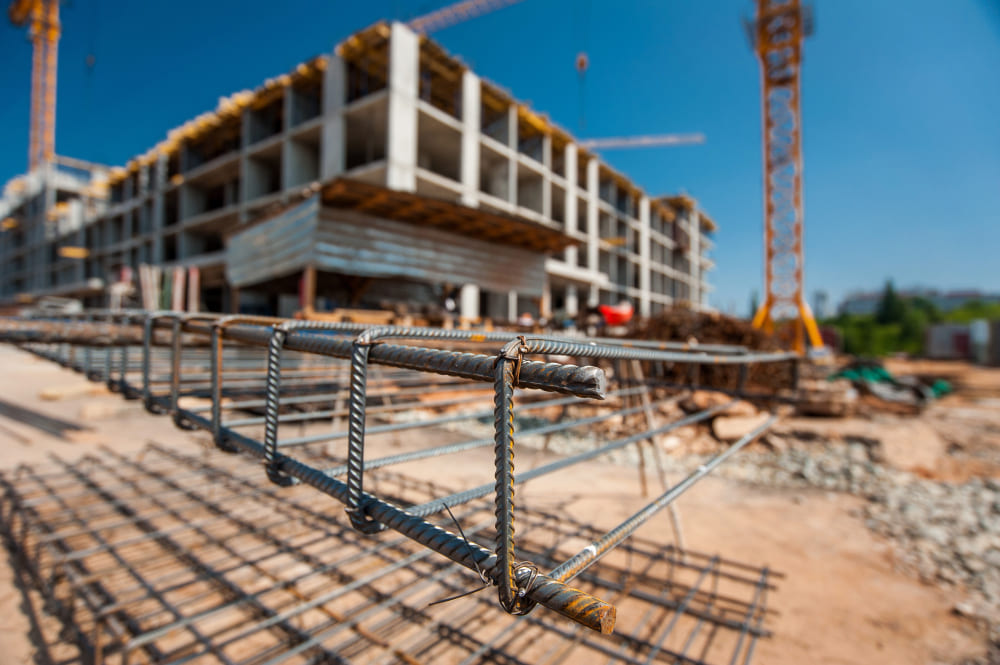
Frequently asked questions about types of construction, classification and standards
What is a construction?
A building is a work of engineering that involves the creation of a permanent structure, such as a house, a commercial building, an infrastructure or a facility.
What are the different types of construction?
The types of construction can be classified in various ways, depending on the use, the predominant material or structural system. Some of the most common classifications are:
- For use: housing, commercial buildings, industrial buildings, infrastructures.
- By predominant material: masonry, wood, steel, reinforced concrete, prefabricated.
- For structural system: load bearing walls, frame, arches, vaults, discontinued.
What are building regulations?
Building regulations are a set of rules and specifications that establish the minimum requirements that must comply with the construction works to ensure the safety, health, habitability, and the protection of the environment.
Why are important building regulations?
The rules of construction are important because:
- Ensure the safety of the people: Protect the occupants of the buildings against risks such as landslides, fire, electrocution, etc
- To ensure the quality of the works: Ensure that constructions are durable and resistant to inclement weather.
- Contribute to the protection of the environment: Promote the efficient use of resources and reducing the environmental impact of constructions.
Who is responsible for compliance with the building regulations?
The compliance of building standards is the responsibility of:
- The promoter of the work: Is the one who must apply for the licence and to ensure that the same is run in accordance with the rules in force.
- The director of work: It is the technical manager of the work and must ensure compliance with the rules of construction.
- The construction company: It is in charge of carrying out the work in accordance with the standards of construction.
- The public administration: It is responsible for monitoring compliance with construction standards and punish those who fail to comply.
What materials are used in construction?
The construction materials can be classified into:
- Stone materials: stone, sand, gravel.
- Ceramic materials: brick, tile, block.
- Metallic materials: steel, aluminum.
- Bituminous materials: asphalt, bitumen.
- Wood material: solid wood, plywood.
- Plastic materials: PVC, polyethylene.
- Composite materials: reinforced concrete, fiber glass.
What are the techniques of construction used?
The construction techniques most commonly used vary depending on the type of construction and the materials used. Some of the most common techniques are:
- Masonry: Based on the union of masonry units, such as bricks or blocks using mortar.
- Formwork and concreting: It is used to create structural elements of reinforced concrete, such as beams, pillars and slabs.
- Carpentry: It is used for the manufacture of wooden elements, such as doors, windows, beams and planking.
- Metalworking: It is used for the manufacture of metal elements, such as structures, beams, stairs and railings.
- Prefabrication: It is based on the manufacture of construction elements in a workshop or factory for rear mounting in the work.
What security measures should be taken in the construction?
Measures construction safety are essential to prevent accidents and to protect the health of the workers. Some of the most important measures are:
- Use of personal protective equipment (PPE): helmets, goggles, safety gloves, safety boots, etc
- Safety signs: To indicate the risks present in the work and the precautionary measures that should be taken.
- Health and safety plans: Develop and implement specific plans for each project, identifying risks and establishing the prevention and control measures necessary.
- Training and safety training: Train workers in health and safety in construction.
- Supervision and control of the security: Monitor and control the compliance of the security measures in the work.
What is sustainable construction?
Sustainable construction is a way of building that seeks to minimize the environmental impact of buildings over their life cycle, from the extraction of materials to the demolition of the building.
What are the principles of sustainable construction?
The principles of sustainable construction are:
- Energy efficiency: To reduce the energy consumption of the building by using the bioclimatic design, the use of materials that are efficient and the implementation of renewable energy systems.
- Use of sustainable materials: To use materials with low environmental impact, such as recycled materials, source materials and local materials with environmental certification.
- Waste reduction: Minimize the generation of waste during the construction and the demolition of the building, and to promote reuse and recycling.
- Protection of the environment: Prevent contamination of soil, water and air during the construction, and to protect the biodiversity of the environment.
- Improving the quality of life: Create healthy spaces and comfortable for the occupants of the building, and contribute to the creation of more sustainable cities.
What are the benefits of sustainable construction?
The benefits of sustainable construction are:
- Energy and resource savings: Reduces the consumption of energy and natural resources, which translates into cost savings for owners and occupants of the building.
- Reduced environmental impact: Decreases the pollution of air, water and soil, and contributes to the fight against climate change.
- Improving the health and well-being: Creates spaces healthier and more comfortable for the occupants of the building, resulting in an improvement of their quality of life.
- Creation of green jobs: Generates new jobs in the sustainable construction sector.
What strategies can be followed to a sustainable building?
Some of the strategies that can be followed for a sustainable construction they are:
- Bioclimatic design: Orient the building properly, take advantage of natural light and natural ventilation, and use systems of thermal and acoustic insulation.
- Zero-energy buildings: Design and construct buildings that produce the energy required for their operation from renewable sources.
- Eco-friendly materials: To use materials with low environmental impact, such as recycled materials, source materials and local materials with environmental certification.
- Efficient management of water: Reduce the consumption of water through the installation of faucets and sanitary, efficient, and the collection and reuse of stormwater.
- Sustainable transport: Promote the use of sustainable modes of transport, such as cycling or public transport, and the installation of recharging points for electric vehicles.
- Waste management: Minimize the generation of waste during the construction and the demolition of the building, and to promote reuse and recycling.
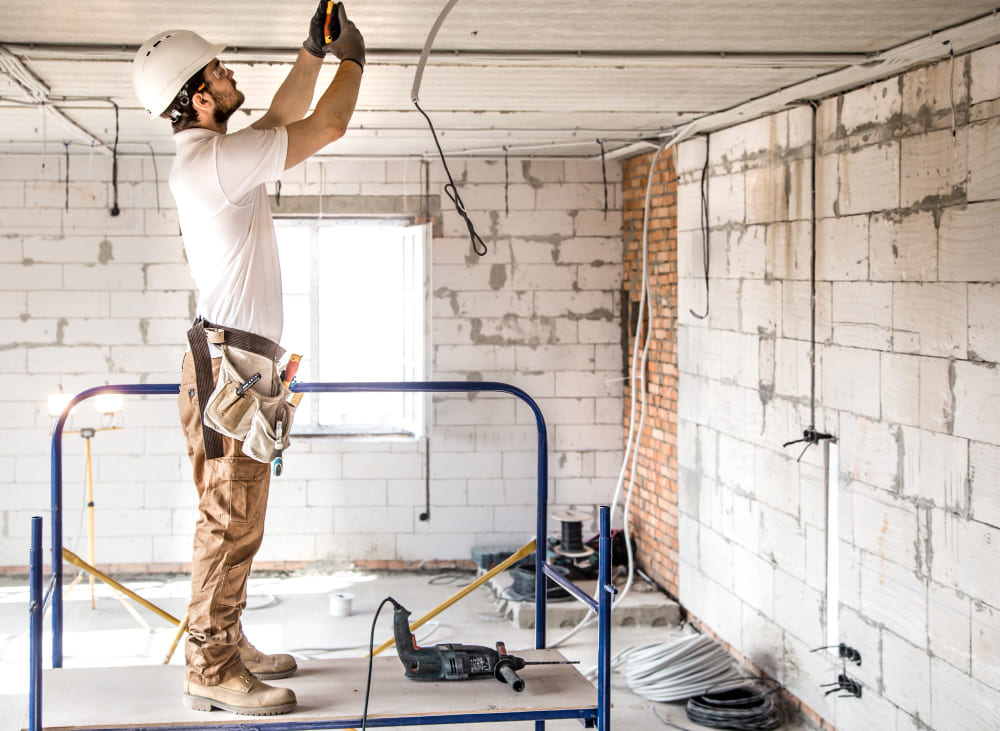
Additional resources
Here's a listing of additional resources for Spain related to the structure of housing:
Institutions and Organizations.
- MITMA – Ministry of Transport, Mobility and Urban Agenda
- Institute of Construction Science Eduardo Torroja (IETcc): ietcc.csic.is
- National institute of Statistics (INE): www.ine.es
- Official college of Architects of Spain (COAE): www.coae.es
Standards and Regulations
- Technical Building code (CTE): www.codigotecnico.org
- Basic rule of Building (NBE): www.boe.es
- Regulation of Thermal Installations in Buildings (RITE): www.boe.es
Associations and Federations
- National association of Spanish Manufacturers of Ready-mixed Concrete (anefhop.com)
- Spanish association of Wood (AEDEM): www.aedem.es
- Spanish federation of Construction (FEC): www.fec.es
Journals and Magazines
- Journal of Architecture and Construction (RAC): www.rac.es
- Journal of Construction (RC): www.revistadelaconstruccion.com
- Reports of the Construction (csic.is)
Universities and Research Centres
- Polytechnic university of Madrid (UPM): www.upm.es
- University of Seville (US): www.us.es
- Research building of Ada Byron – Information – University of Malaga (uma.is)
Other Resources
- A guide of Sustainable Construction, industrial growth: Publications – a Guide to industrialized construction sustainable in the Basque Country (ihobe.eus)
- CNC – national Confederation of construction – Spain
- Spanish association of civil Engineers, Canals and Ports (AEC): www.aec.es
I hope that these resources will be of help. If you need anything else, do not hesitate to ask
Conclusion
The world building is fascinating and complex, encompassing a wide range of disciplines and knowledge. In this article, we have provided a comprehensive introduction to the types of construction, its classification and the rules that regulate them. We hope that this guide has been useful to those who enter for the first time in this area.
It is important to remember that the construction is a dynamic process that is constantly changing. New technologies, materials and techniques that continually arise, forcing the professionals of the sector to be in constant update.
If you are passionate about the world of construction and want to deepen your knowledge, we recommend further research and learning new things. There are a number of universities, technical schools and training centers that offer specialized courses in different areas of the building.
Did you like this article? What has been useful to you? If so, don't hesitate to share it with your friends and family.



